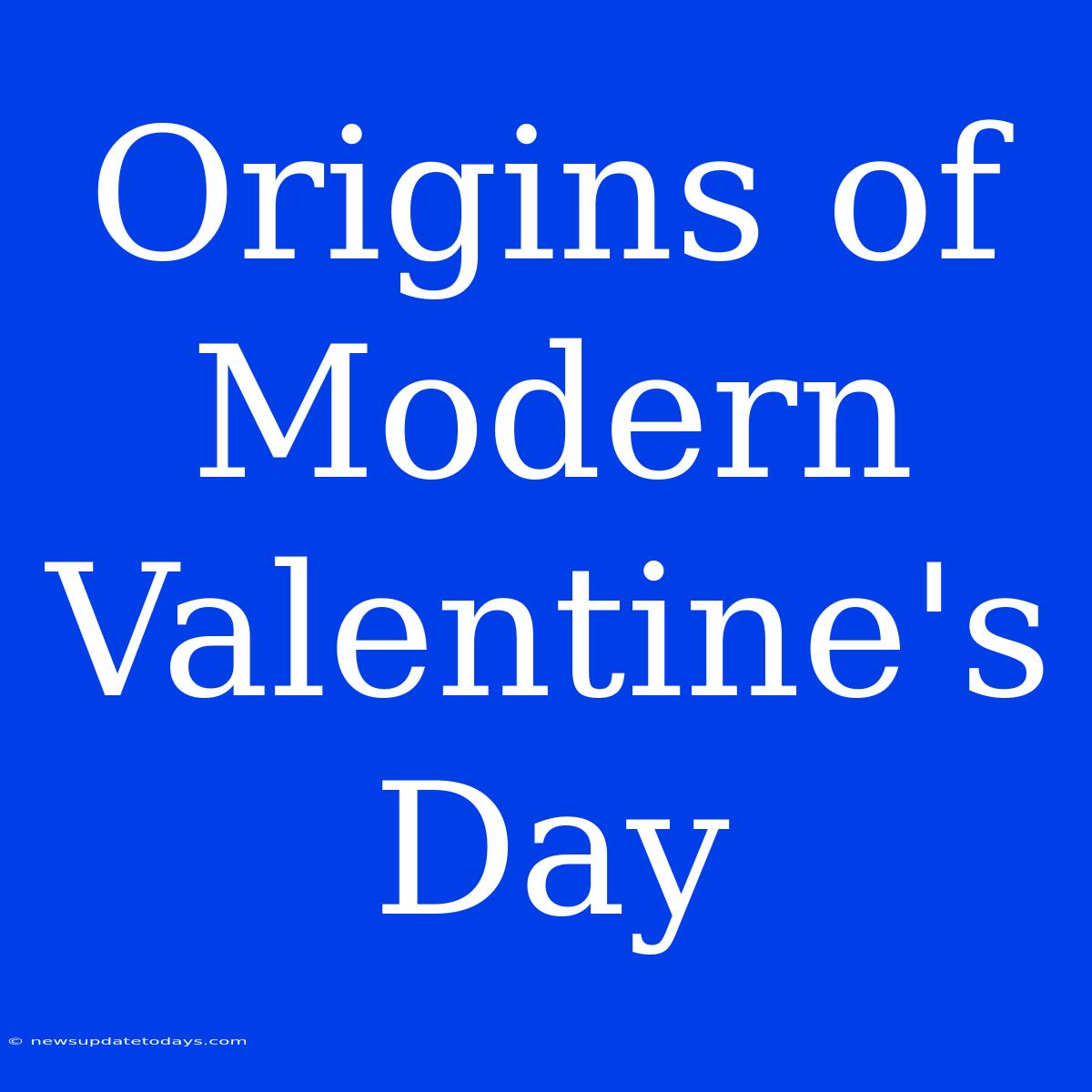Unmasking the Origins of Modern Valentine's Day: A Journey Through History
Valentine's Day. The day of hearts, flowers, chocolates, and romantic gestures. But where did this commercialized holiday actually originate? The truth, as with many beloved traditions, is surprisingly complex and shrouded in layers of history, legend, and perhaps a bit of romantic myth-making.
The Many Valentines: Sorting Fact from Fiction
The origins of Valentine's Day aren't pinned to a single event or individual. Instead, several theories intertwine, making it a fascinating puzzle to piece together. One popular theory points towards Saint Valentine, a name shared by several early Christian martyrs. However, identifying the Valentine responsible for the holiday is challenging due to the lack of conclusive historical evidence. Several saints named Valentine existed during the Roman Empire, each with their own story, adding to the mystery.
Roman Festivals and the Feast of Lupercalia: Pagan Roots?
Some scholars suggest a link between Valentine's Day and the ancient Roman festival of Lupercalia, a fertility festival celebrated in mid-February. This pagan festival involved rituals and sacrifices, hardly resembling the modern Valentine's Day. However, the timing—the mid-February celebration—does offer a potential connection. The Christian church, during its rise to prominence, often absorbed or reinterpreted pagan traditions, possibly integrating aspects of Lupercalia into the celebration of Saint Valentine.
Geoffrey Chaucer and the Birth of Romantic Valentine's Day:
It wasn't until the Middle Ages, specifically around the 14th century, that the romantic association with Valentine's Day truly began to take shape. Geoffrey Chaucer, in his poem "Parliament of Foules," linked Saint Valentine's Day to courtly love and bird mating season. This association, though poetic license, helped establish Valentine's Day as a celebration of romantic love, paving the way for the modern interpretation.
The Evolution of Valentine's Day Traditions:
From Chaucer's influence, the tradition of sending love letters, or "valentines," gradually evolved. These early valentines were often handwritten expressions of affection, often quite elaborate and artistic. The 18th century saw the rise of commercially printed valentines, further solidifying the holiday's popularity.
Modern Valentine's Day: A Global Phenomenon:
Today, Valentine's Day is a global phenomenon. While the original origins remain somewhat obscure, the holiday's evolution reflects a blend of religious, pagan, and cultural influences, solidifying its place in the hearts and calendars of millions worldwide. The focus on romance, love, and affection remains a constant thread throughout its rich and layered history.
Keywords: Valentine's Day, origins, history, Saint Valentine, Lupercalia, Geoffrey Chaucer, romantic love, traditions, evolution, pagan, Christian, Middle Ages, February 14th.

